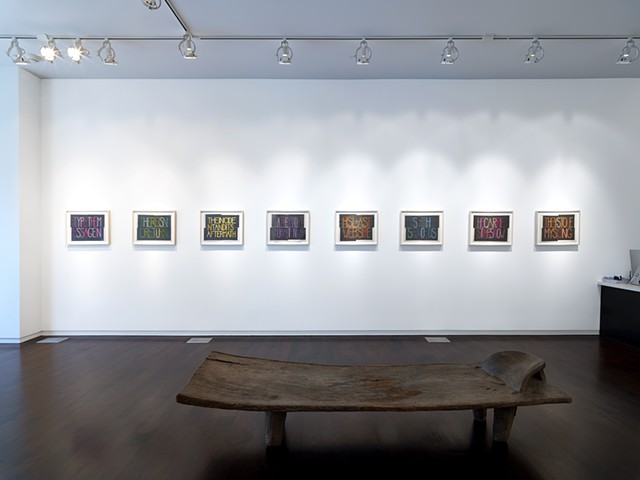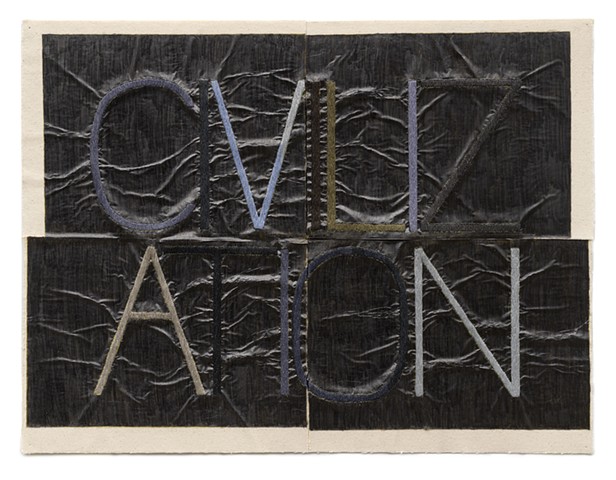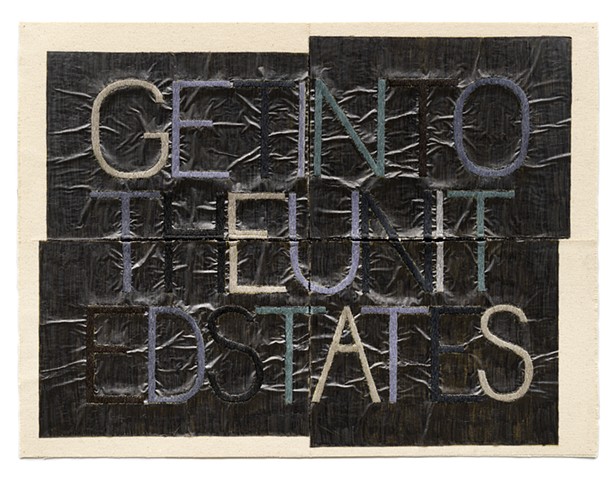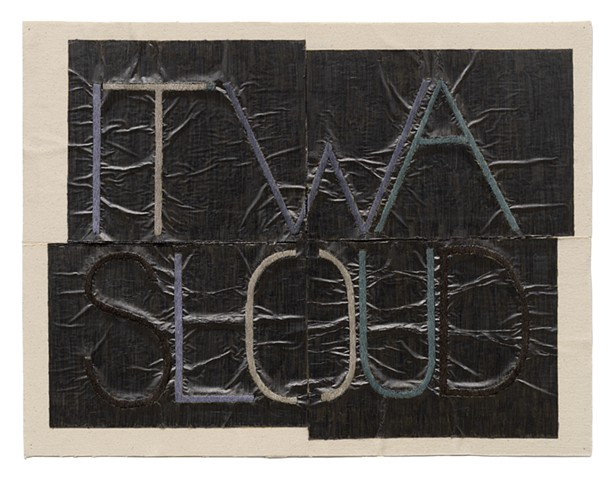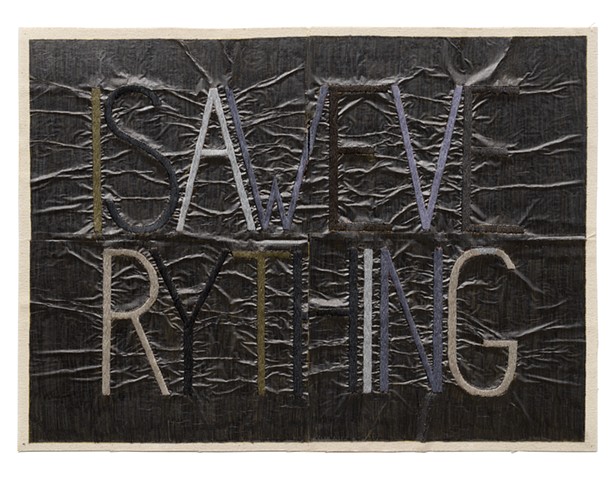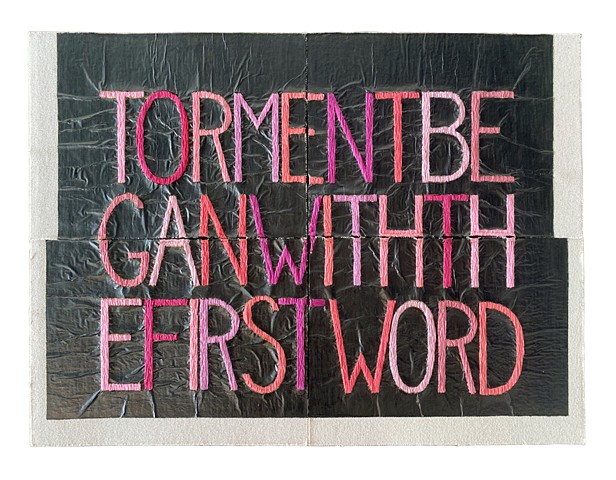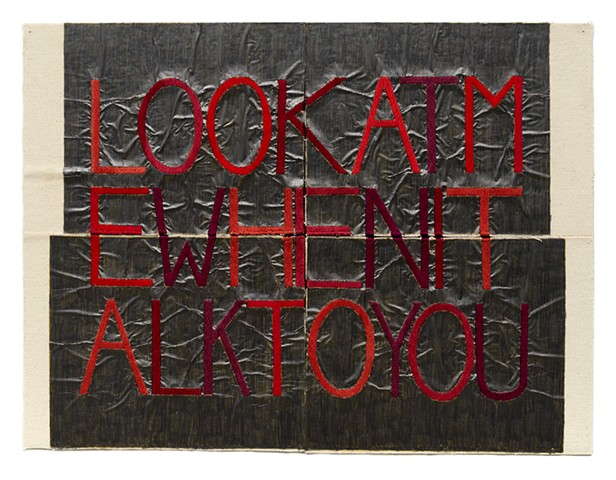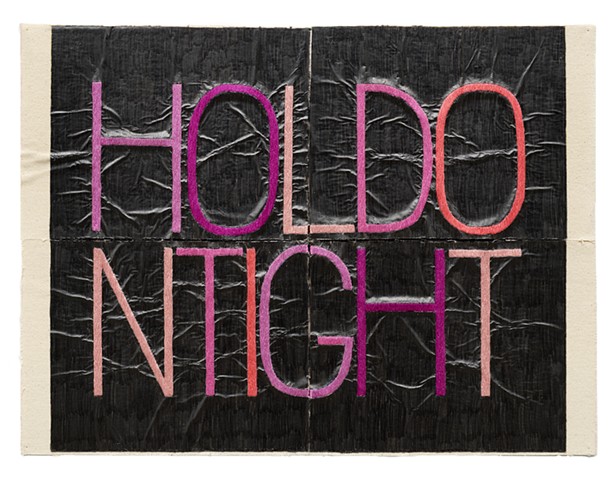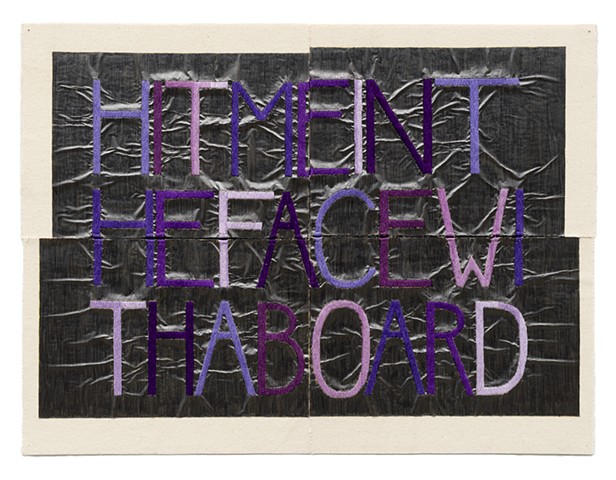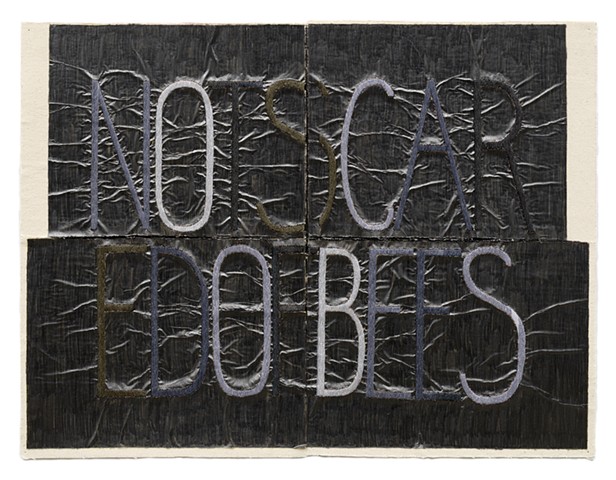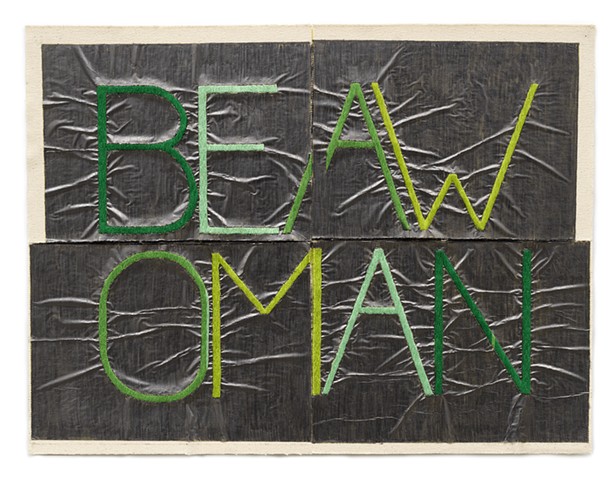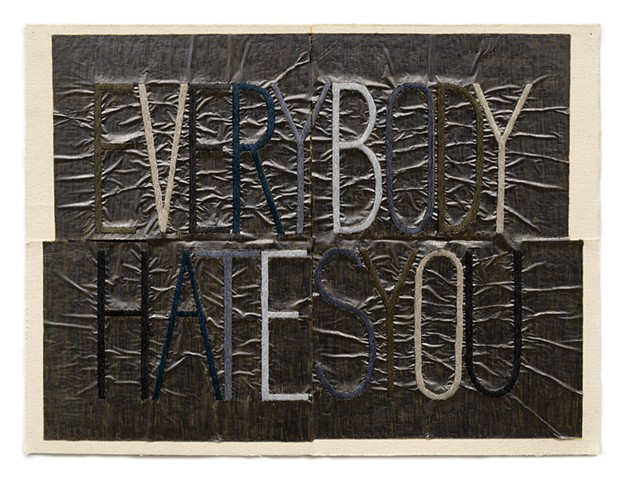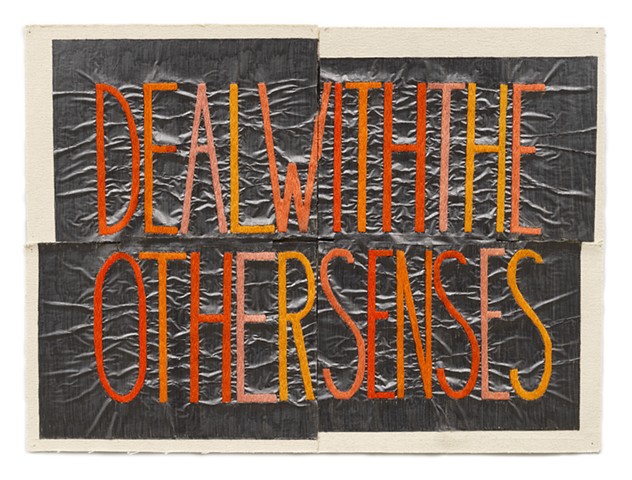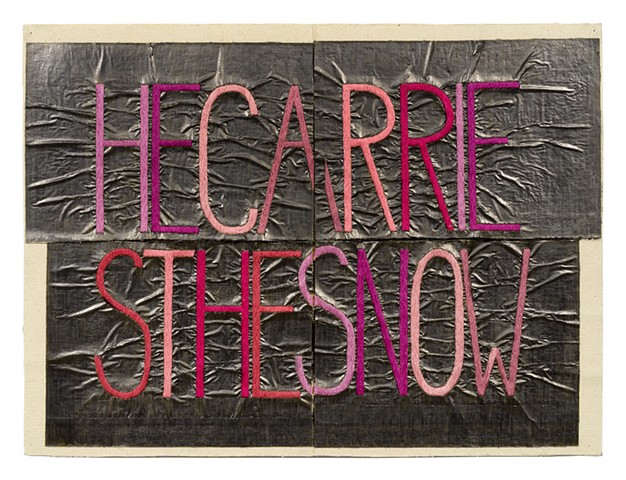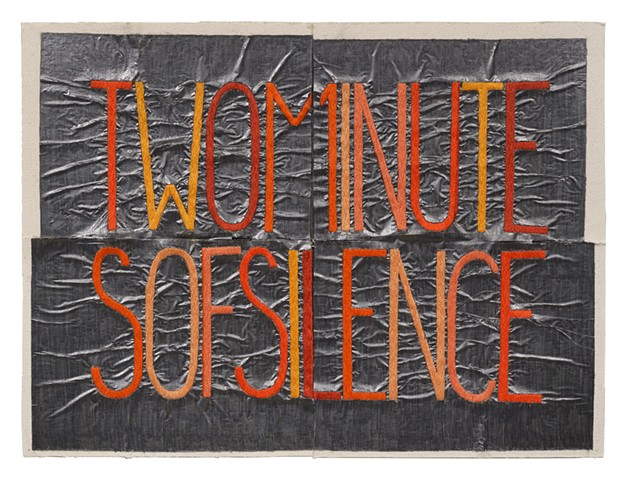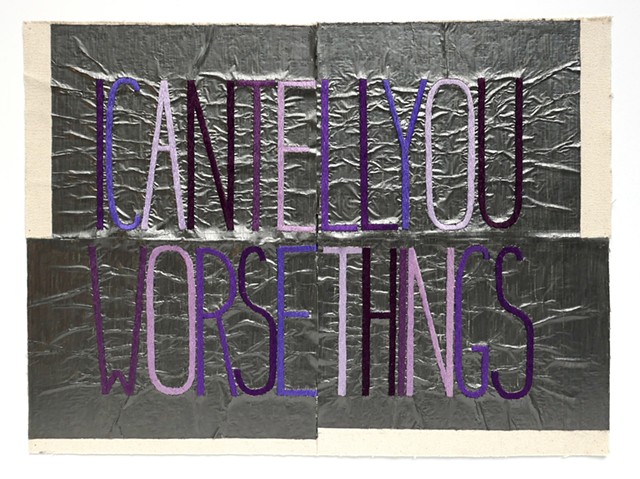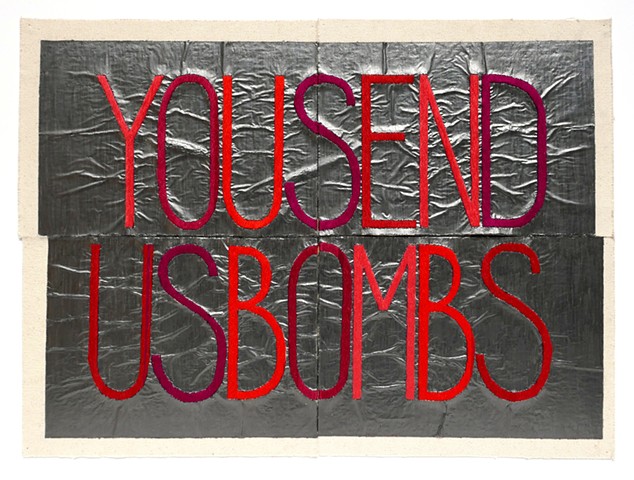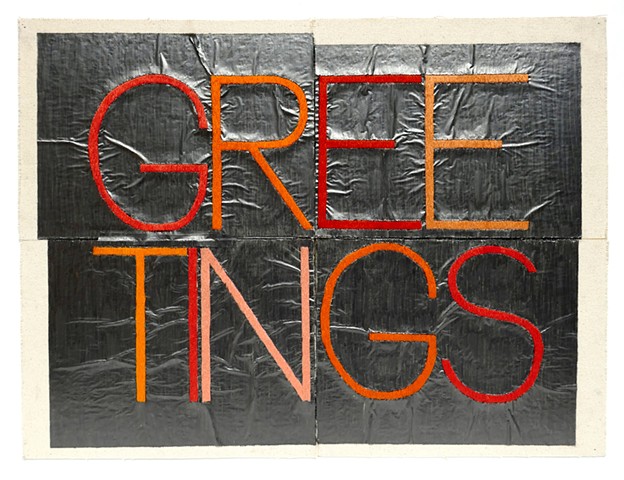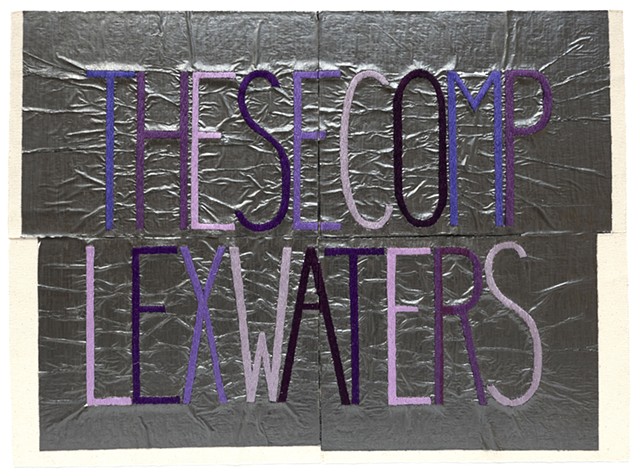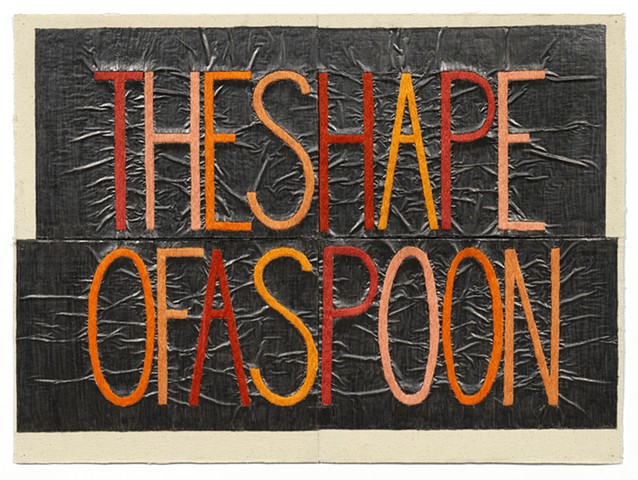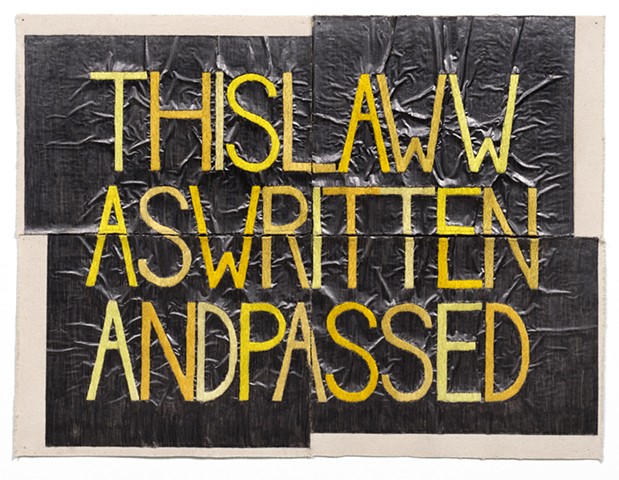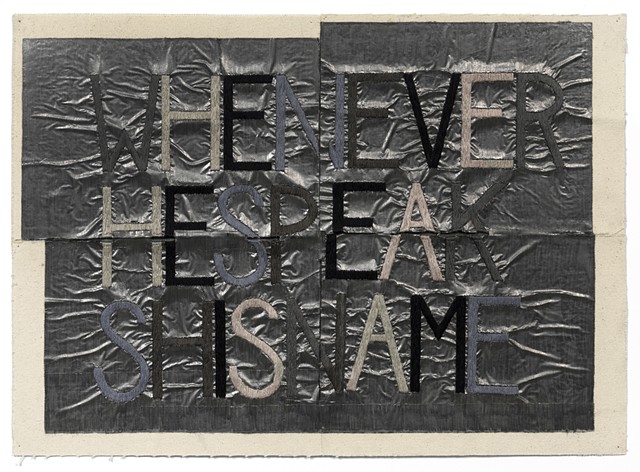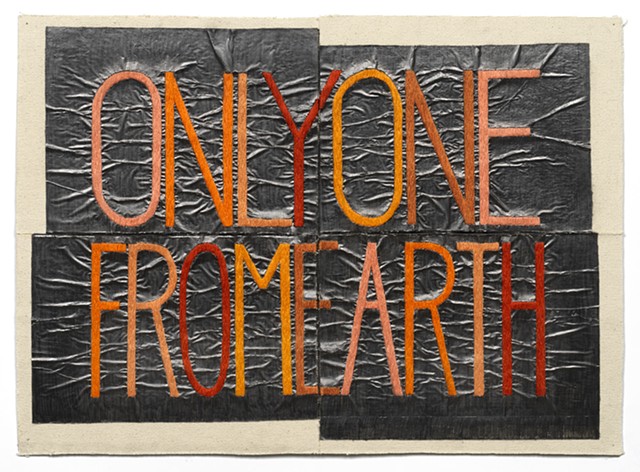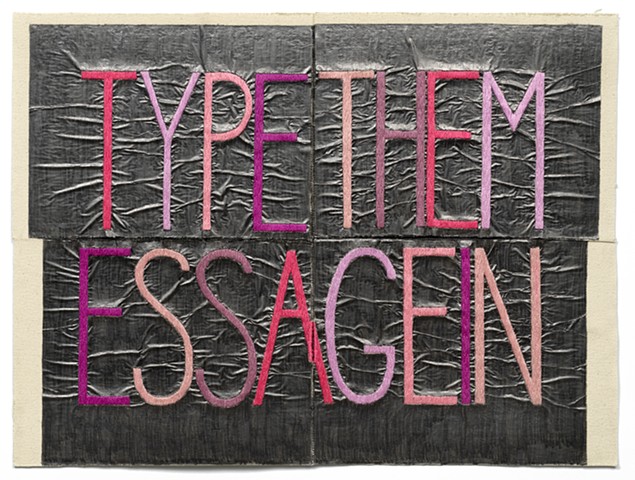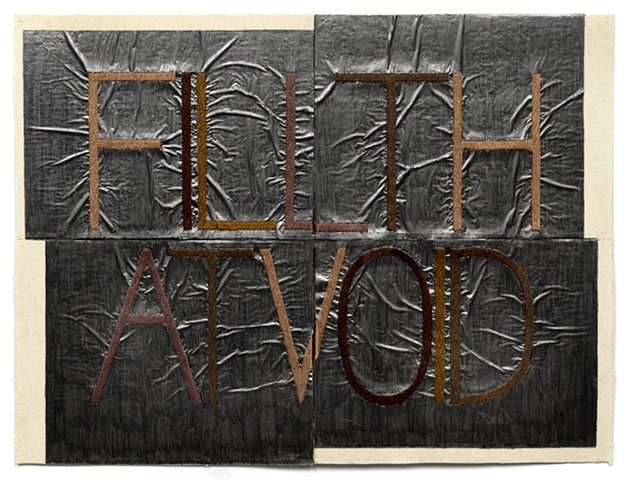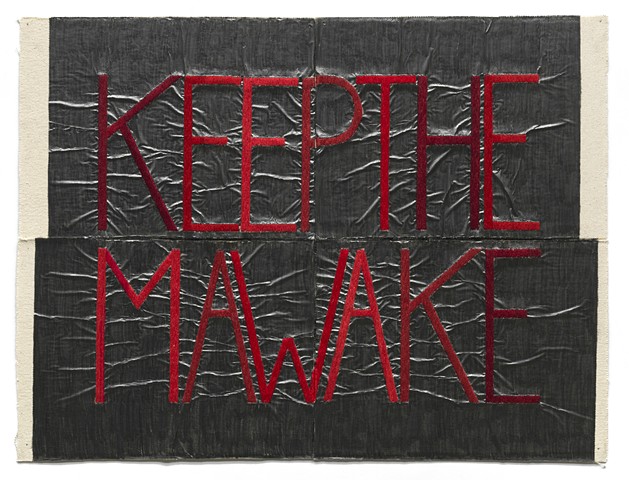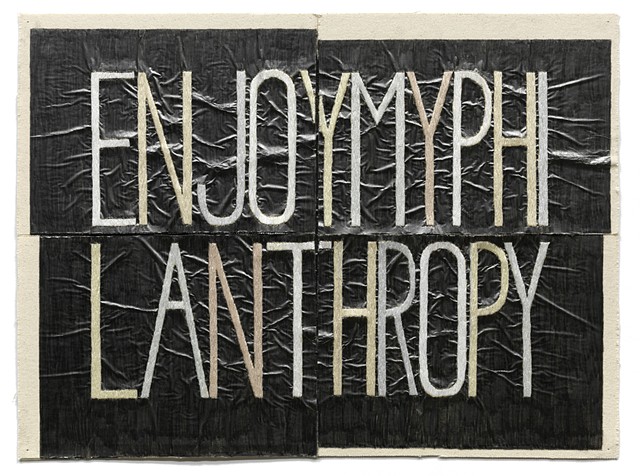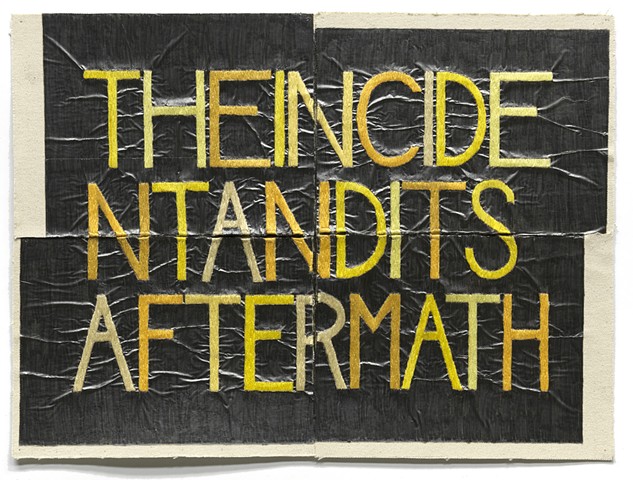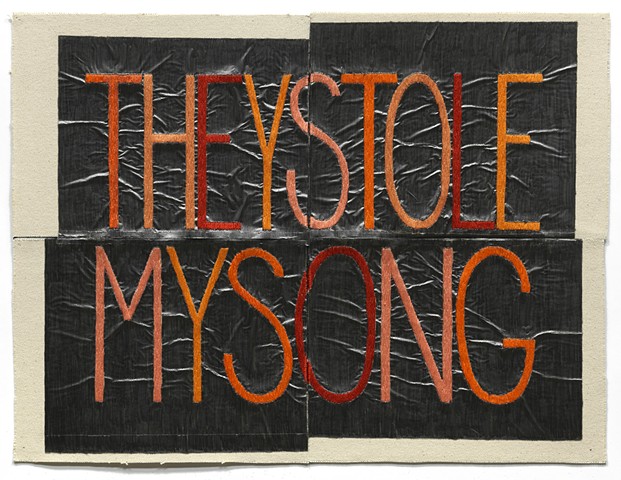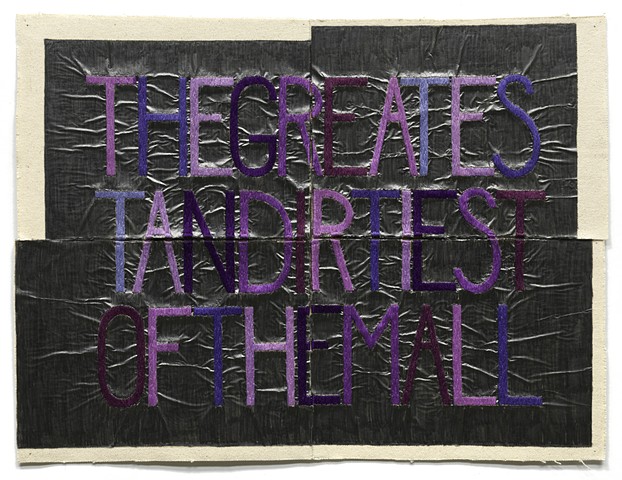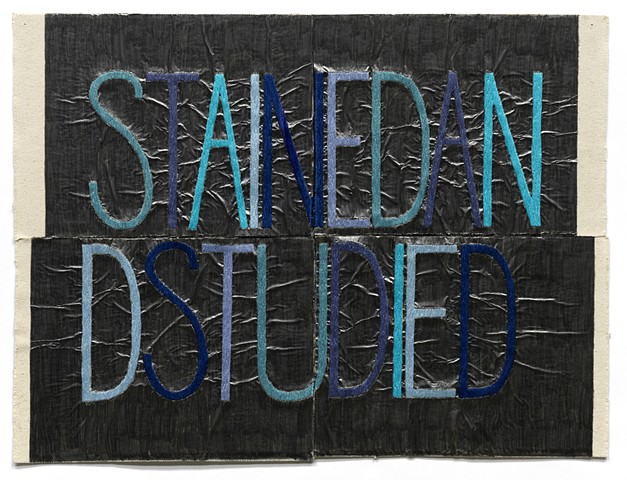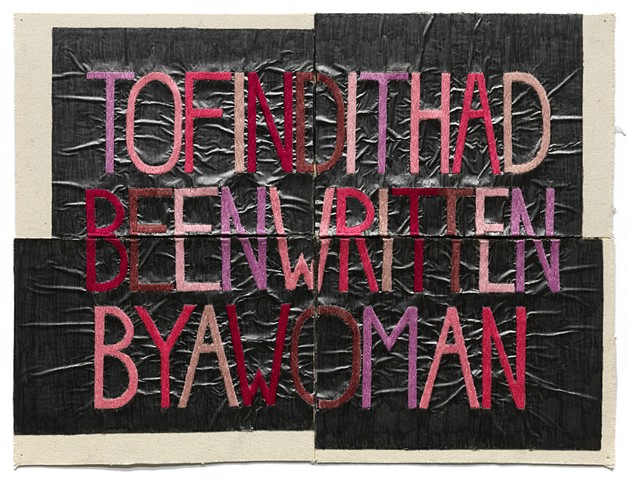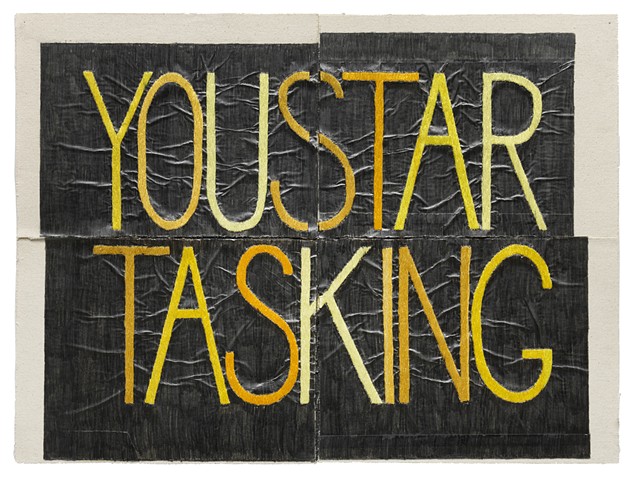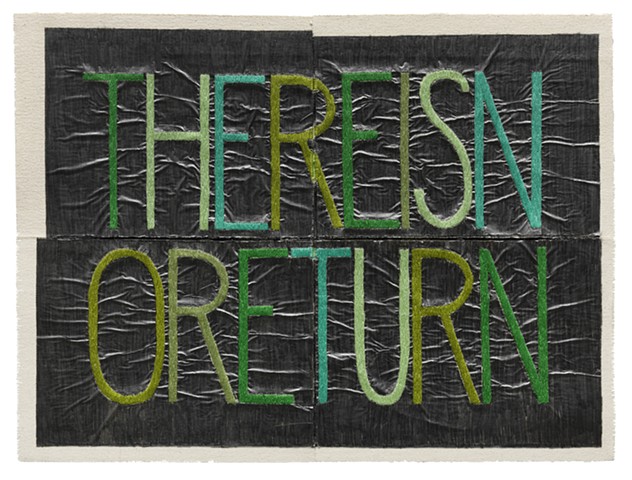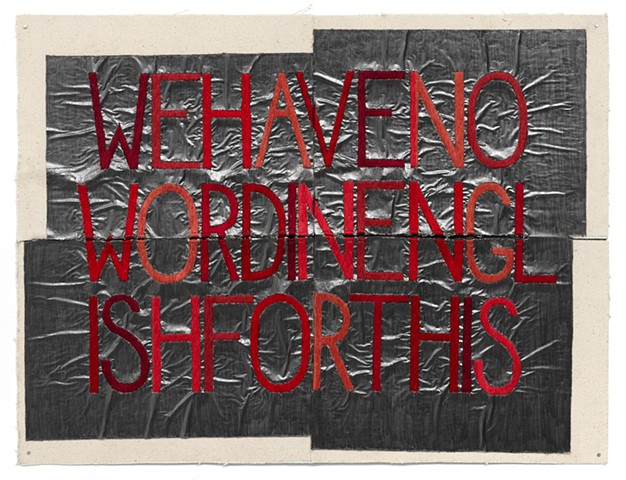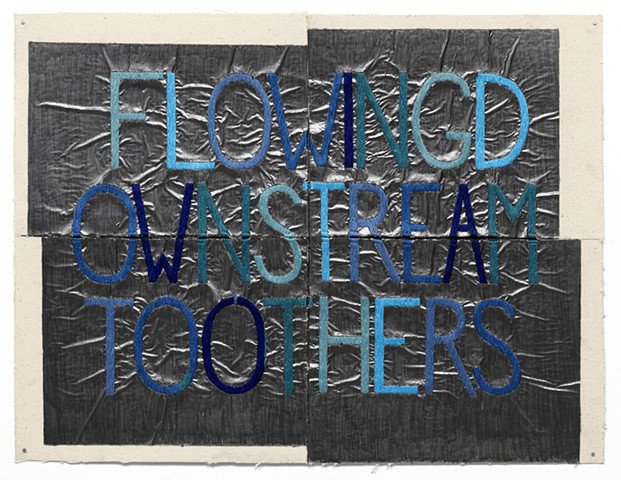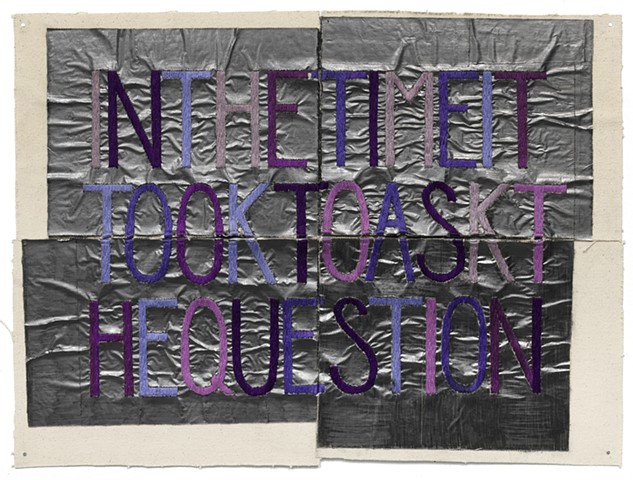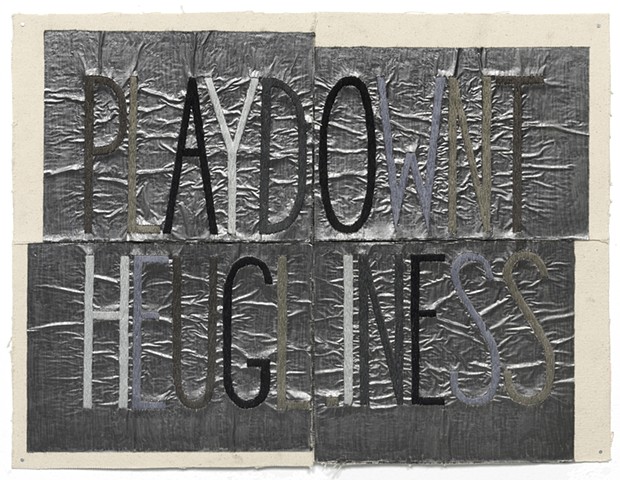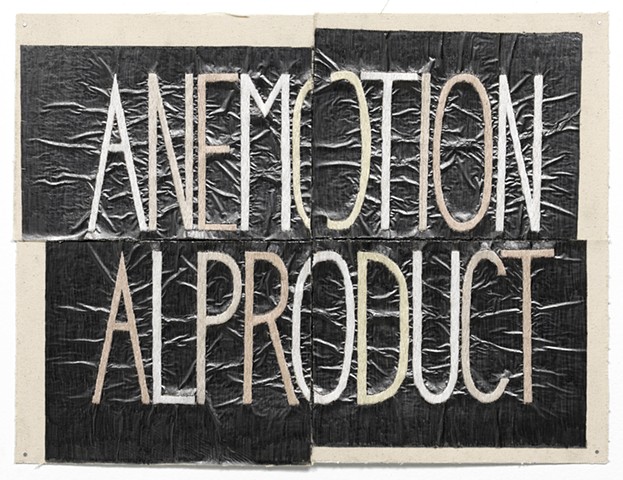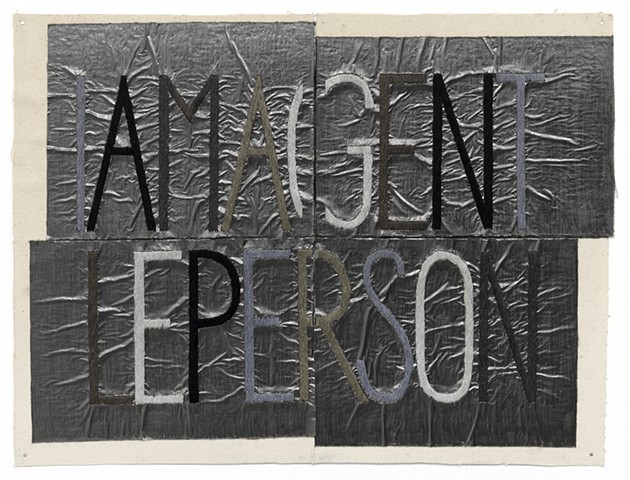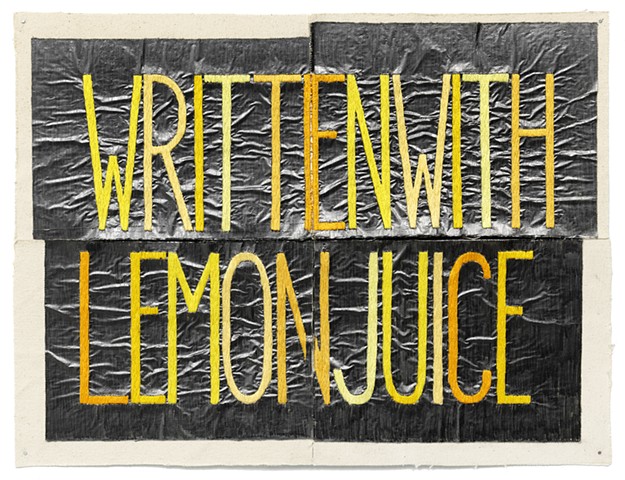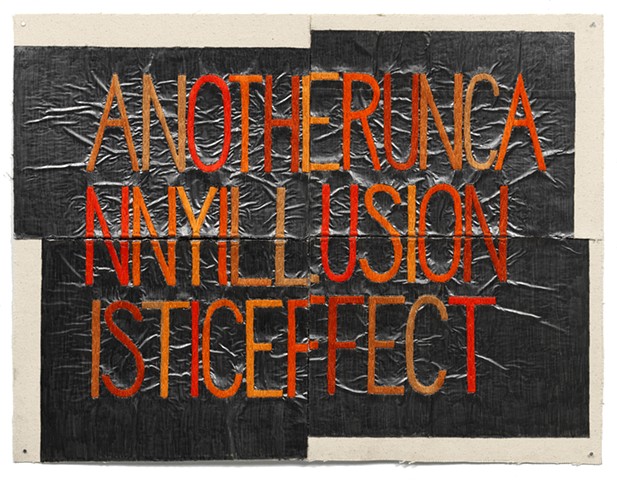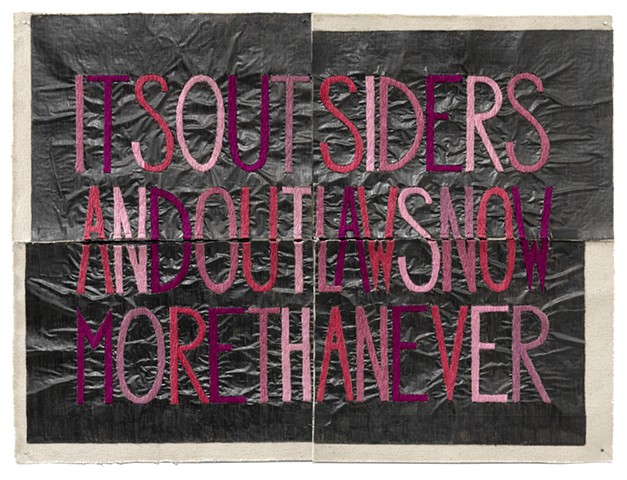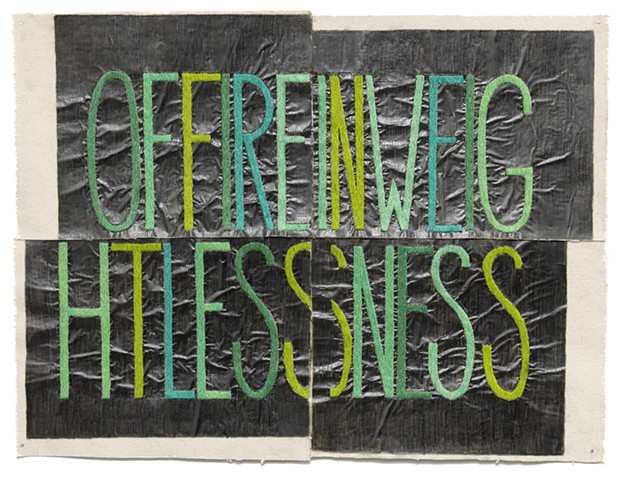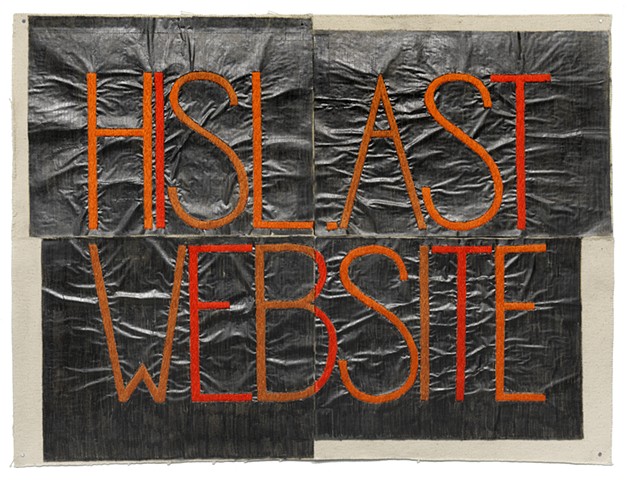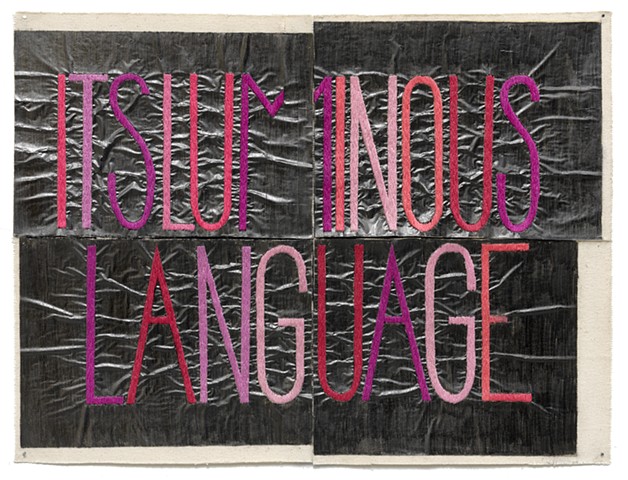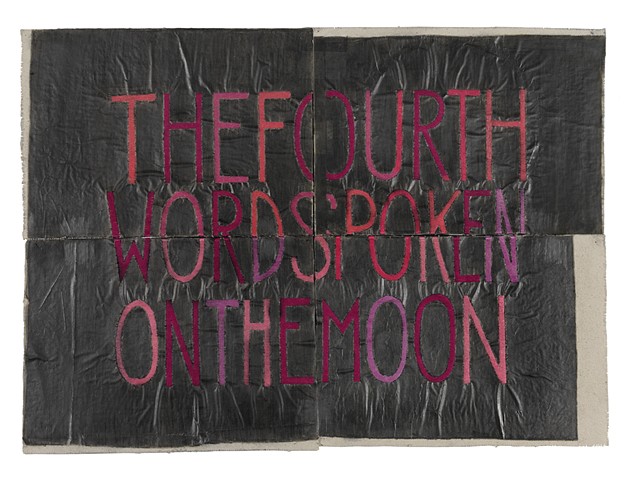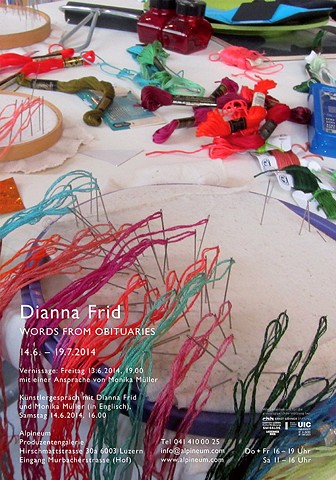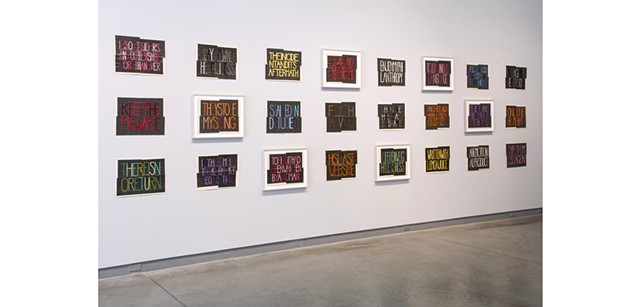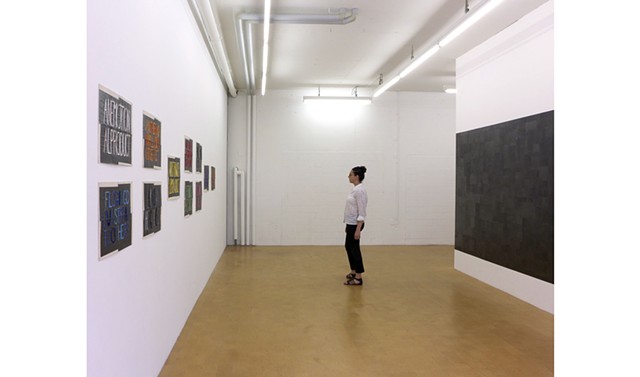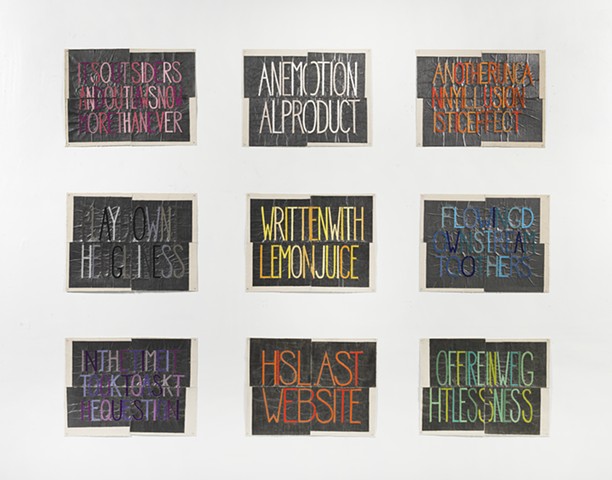WORDS FROM OBITUARIES 2011-2023
WORDS FROM OBITUARIES
Ongoing since 2010
Shown loosely in chronological order, with the most recent at the top
Each work:
Canvas, paper, embroidery floss, graphite
15 × 20 inches
[...text continues below...]
ABOUT THE WORDS FROM OBITUARIES SERIES
A NOTE ON THE SYSTEM
Each work consists of four quadrants and has two or three lines of text. There are no spaces between words, which slows down reading. Sometimes one might distinguish a word inside another, or a word that arises from the proximity of two words. In some of the Words From Obituaries the enjambment happens mid-word, which is a welcome outcome.
ABOUT THE SERIES
In 2010, I started an archive of obituaries from the New York Times. In this archive, I loosely codify the obits according to a classification system that I devised. I chose different colors to classify the occupations or "life-works" of those memorialized in the obituaries: for example, persons whose work was dedicated to language (poets, translators, linguists, writers…) are codified with pink thread; those who worked in scientific exploration (astronauts, physicists…) are codified in green, and so on.
In the series, I embroider the words with the color corresponding to the profession of the deceased person. And yet, no “life-work” can be neatly classified. Persons are remembered for all kinds of acts and deed, some of which could be unspeakable, as in war crimes. Some people engaged in life work, such as philanthropy, which could be considered vocational, rather than professional. When systems of classification get messy—and they will—they become interesting. Why? The mess illuminates the fact that a human life (or whatever is being classified) is irreducible to one single, compelling account.
As I sort through hundreds of obituaries in the New York Times, I find, in a few of them, samplings of phrases that are just right. They seize a moment in language that operates both within and outside the source. I do not choose these words for their narrative or honorific value, but rather for an external urgency, that to some extant remains linked to the source.
Each finished piece measures 15 x 20 inches; what may vary is the number of letters and therefore the number of rows. I don't add or change words; however, I remove the spaces between words and, if present, take out punctuation marks. Some words are fragmented between rows of text. All this provokes an expanded reading where words arise from within words, and letters latch onto letters in adjacent words. SENSE and FORM shift: sometimes the letters are more apparent than the words, and vice-versa.
